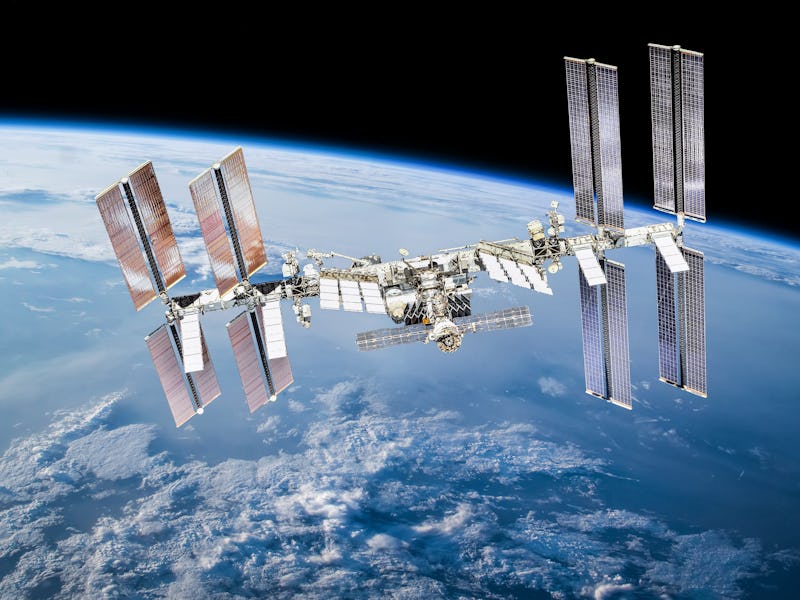Axiom Space VP defends private mission to the ISS: “We’re not space tourists”
This is not supposed to be fun...

Axiom Space is going where no private space company has gone before: the International Space Station. On Monday, February 28, the company detailed the AX-1 mission, the first-ever private mission to the ISS, currently slated to launch on March 30 aboard a SpaceX Falcon 9 rocket. But Axiom wants to make one thing clear before they go: The AX-1 crewmembers are private citizens but they are distinct from other private space endeavors, like Blue Origin or Virgin Galactic.
Axiom Space vice president and former NASA astronaut Michael López-Alegría put it bluntly: “We are not space tourists.”
The AX-1 mission: Vital details
López-Algeria is the mission commander for the AX-1 mission, which will launch on March 30 from NASA’s Kennedy Space Center in Florida using a SpaceX Falcon 9 rocket. López-Algeria and three other crewmembers will wing their way to the International Space Station and spend eight days on the space lab. There, they plan to conduct a series of scientific experiments. But for us on Earth, the mission marks a new frontier for the private space industry.
Private citizens have made trips to the ISS before, but this is the first private space mission that only includes paying customers as the crew (and López-Algeria, of course).
The crew includes U.S. real estate investor Larry Connor, former Israeli fighter pilot and businessman Eytan Stibbe, and Canadian businessman Mark Pathy. Tickets cost a reported $55 million apiece.
While aboard the ISS, the crew members will carry out at least 25 experiments designed to test the health effects of space travel, the design of space habitats, spacecraft self-assembly, and more, says Christian Maender, the director of in-space research and manufacturing at Axiom Space.
AX-1: Not just another space tourism jaunt
Michael López-Alegría back in his NASA days.
During a press briefing on February 28, López-Alegría took pains to separate the AX-1 mission from recent sub-orbital flights by private companies including Blue Origin and Virgin Galactic.
“I think there’s an important role for space tourism, but it is not what Axiom is about,” he says.
“It’s definitely not a vacation for them,” he adds, referring to the private crew.
The mission marks a turning point in NASA’s strategy. The American space agency is pivoting away from a solely government-funded model for space exploration and innovation. SpaceX has already flown umpteen payloads to the ISS, and a number of other companies, including Axiom, are working on developing their own infrastructure for human space exploration, including rockets, spacecraft, and even their own fully-fledged private space stations.
NASA says it’s looking forward to more missions involving private astronauts on the ISS. A second Axiom mission, AX-2, is already slated to launch sometime later this year or early next year. Details remain scant at this stage, however.
For now, the AX-1 mission gives both Axiom and NASA a blueprint for future partnerships, says Philip McAllister, the director of the commercial spaceflight division at NASA. One key difference in this mission, for example, is that NASA is handing over control of the launch to Axiom Space. Only when the mission reaches the ISS will NASA assume any responsibility for the safety of the equipment and crew.
“Axiom Space is really responsible for the most part for the passengers, the crew members, their safety during the ascent and launch… as well as the return,” he says.
The crew will also bear the extra responsibility of setting standards for future missions, López-Alegría adds.
“We feel like we are going to be standard-bearers. We really want to set the bar very, very high. We’re very cognizant that we’ll be guests aboard the ISS,” he says.
What’s next for the ISS and Axiom Space
Astronaut Raja Chari tests using tools while wearing a spacesuit glove aboard the ISS recently.
Even in space, the specter of events on Earth is impossible to ignore. The ISS crew currently includes two Russian cosmonauts, and the ISS itself is split into two sections: the United States Orbital Segment and the Russian Orbital Segment.
The ongoing Russian invasion of Ukraine has cast serious doubts on the continuation of any orbital partnership between the U.S., Europe, and Russia. Earlier this month, the head of Russian space agency Roscosmos Dmitry Rogozin went so far as to warn of the space station’s “deorbiting” without warning.
More recently, the European Space Agency acknowledged that its relationship with Roscosmos, the Russian space agency, would change in light of sanctions imposed on Russia.
Still, NASA staff say they’re confident that the AX-1 mission, as well as ongoing NASA missions at the ISS, will proceed smoothly.
For his part, López-Alegría says the AX-1 crew would be happy to visit the Russian segment, but they’d likely need an escort if they did so. But that’s because they haven’t received training related to the Russian’s protocols or equipment, he says.
“We’ve operated in these kinds of situations before and both sides always operated very professionally and understand at our level the importance of this fantastic mission and continuing to have peaceful relations between the two countries in space,” says Kathy Lueders, the associate administrator of space operations at NASA.